Shichimenchou らーめん
-the most creative ramen restaurant with thickest broth in Taichung city
<Part two>
Muttepou-style Tonkotsu ramen in Tokushima set
(德島風鐵砲系豚骨拉麵)
8th/Feb/2021 21.8°C night
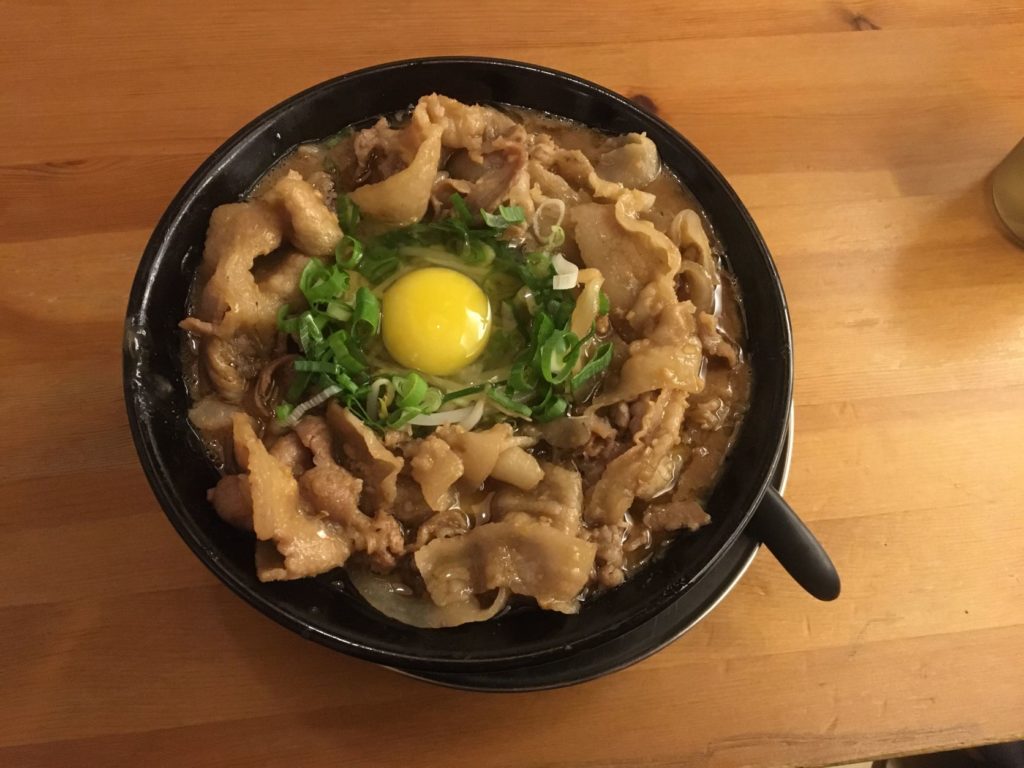
The chance of ordering this ramen is because of the photo posted on Shichimenchou’s official Facebook page: piggies inside different types of mud. I believe that Chef has been trying his best to explain how “muddy” the broth would be, ha. Muttepou-style Tonkotsu ramen in Tokushima set is a fusion of two different ramen styles: Tokushima set (a yolk on the top) and Muttepou-style (thick pork broth made with only pork bones and water)
When experiencing this muddy ramen, I realise the egg yolk is not only for photo shooting(?) but also for balancing the thickness of the pork fat. The sliced pork is not heavy as chunky Chashu, which is sort of balancing the thick broth-By the way, there is little or usually no boar taint in Taiwanese pork. The sliced pork has been well-seasoned and stir-fried which can also effectively minimise the boar taint and the greasy fat. Personally, it’s too porkish for me. However, it will be a good self-check to see if you are really a pork lover: )
Tonkotsu ramen with soy sauce in Tokushima set
(德島風豚骨醬油拉麵)
26th/Feb/2021 27.5°C Sunny
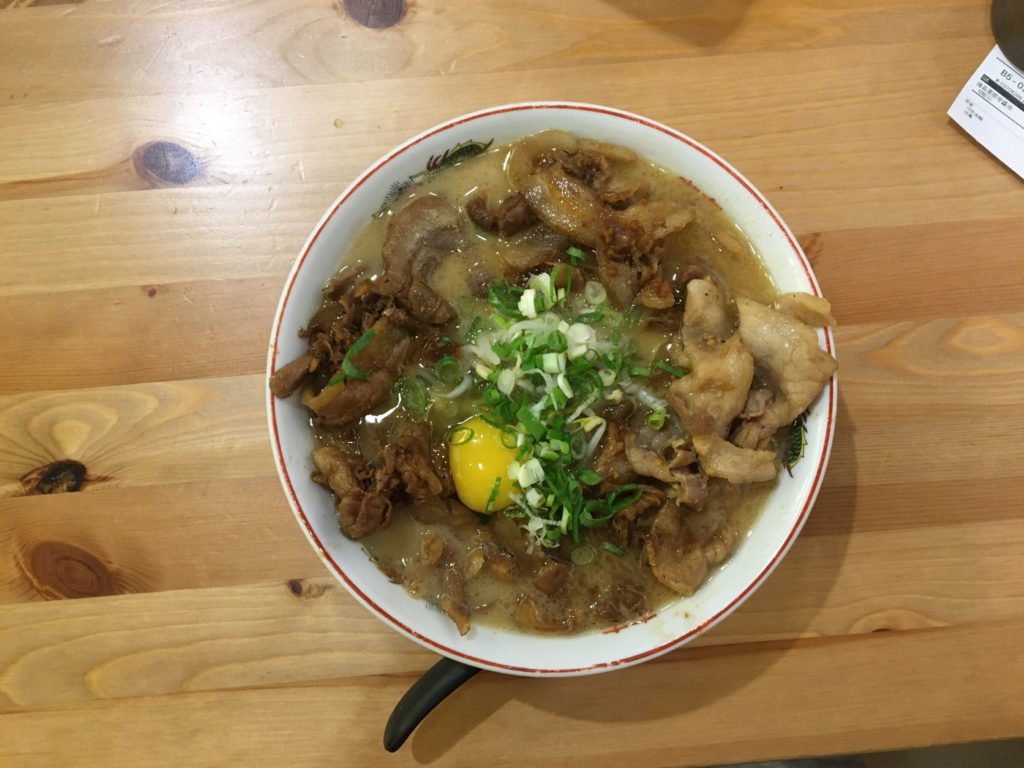
Another try for the ramen in Tokushima set. Compared with the previous one, the broth is not that thick and with more layers due to soy sauce. Therefore, I prefer this style more.
Dining at Shichimenchou, people can customise the noodle. For example, there are thick (太麵) and fine noodle (細麵). The cooking time of the fine noodle can be 5, 20 or 30 seconds as you wish. It is suggested by the restaurant that thick noodle is more suitable for ramen with thicker broth because the fine noodle can absorb too much broth and lose the noodle texture in thicker broth. Sometimes, a few ramens with special flavour can also be provided in thick noodles only by the restaurant. Everyone has their own preference. My preference is fine noodles most of the time because I really love the thick broth and hope all noodles can be coated with the broth as much as possible.
Hope you can find your preferred ramen style.
Duck ramen with Japanese short-necked clams and scallops
(浅蜊干貝鴨白濃湯拉麵)
6th/Mar/2021 25.7°C Sunny
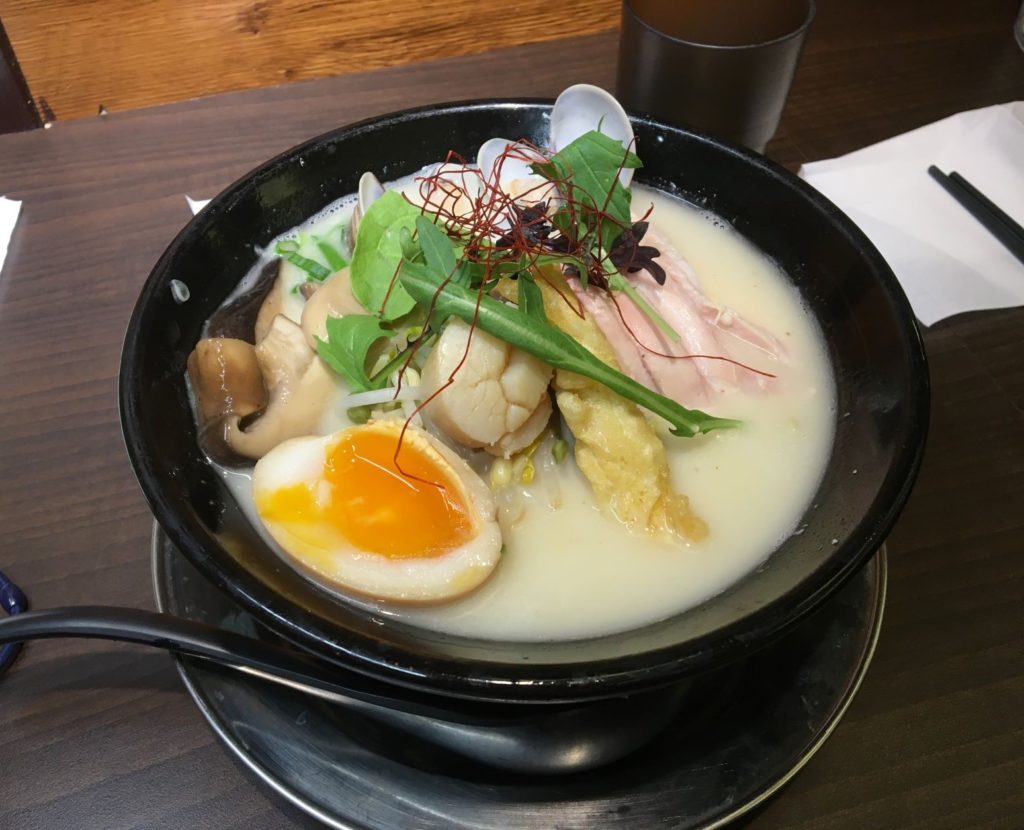
Another broth flavour I highly recommend.
Although the restaurant is not known for duck ramen, the broth here is really amazing. I love the sweetness from duck which is unable to be found in other types of broth. Besides, the perfect blend of clams and duck also makes the broth impressive. The big scallop is another highlight. Overall, this is a ramen feast of both vision and taste.
There are two ways of appreciating the remained broth: either asking for a bowl of rice or ordering plain noodles. Free rice is offered: one free bowl of rice for each ramen. The method is to put the rice or noodle directly into the remained broth for soaking it. Warm reminder for our planet: please make sure you can finish the whole meal before every order because packing leftovers is not allowed at Shichimenchou.
Ankimo ramen with chicken
(鮟肝雞濃湯拉麵)
19th/Mar/2021 27.8°C Sunny
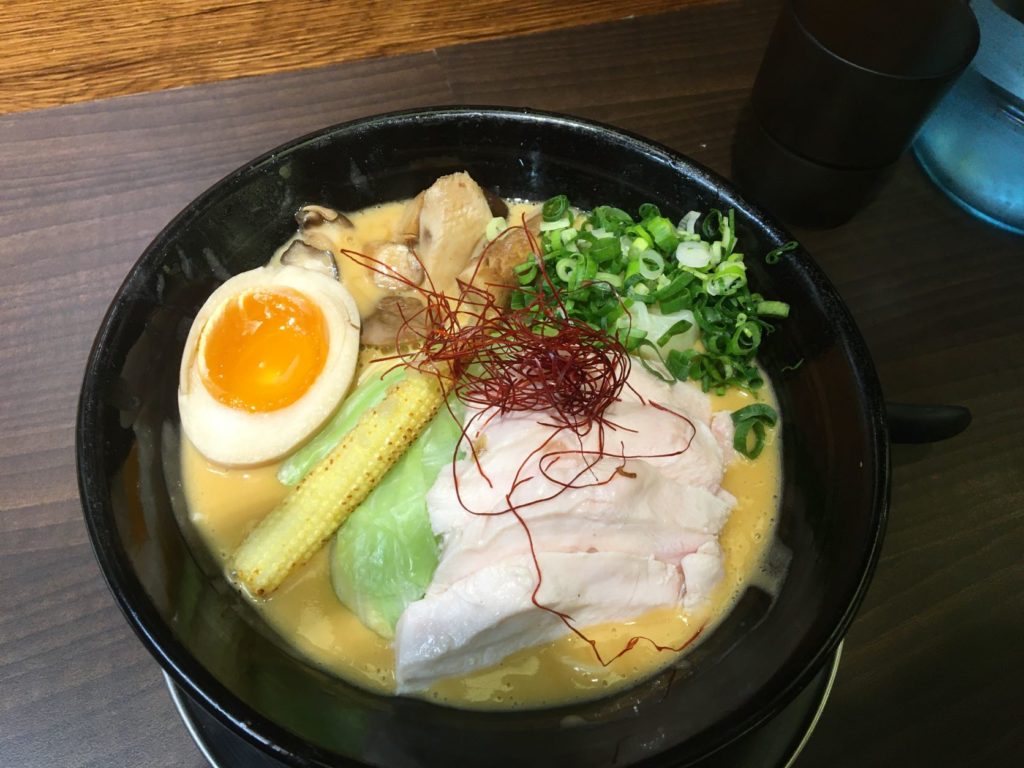
Before becoming a royal fan of ramen, I have no idea of ankimo. Therefore, I especially want to appreciate Shichimenchou for giving me more knowledge prior to this experience sharing! Ankimo (鮟肝) is made with monkfish liver which is described as “very rich and creamy, but yet at the same time very light and delicate, feeling silky and velvety to the palate.” by Yoshi Tome (owner of Sushi Ran, one of the top and Michelin- honoured Japanese restaurants in the US)
The texture of ankimo broth is very creamy and delicate without any fishy smell. It’s very hard for me to describe at the moment. Some people regarded ankimo as a substitute for foie gras. However, although they are both luxurious ingredients, the flavour and texture are totally different. If there are no special flavours I am interested in, ankimo ramen will be the one I will order again (regardless of its “luxurious” price (around NTD$350))
Jiro style ramen (二郎)
31st/Mar/2021 30.1°C Sunny
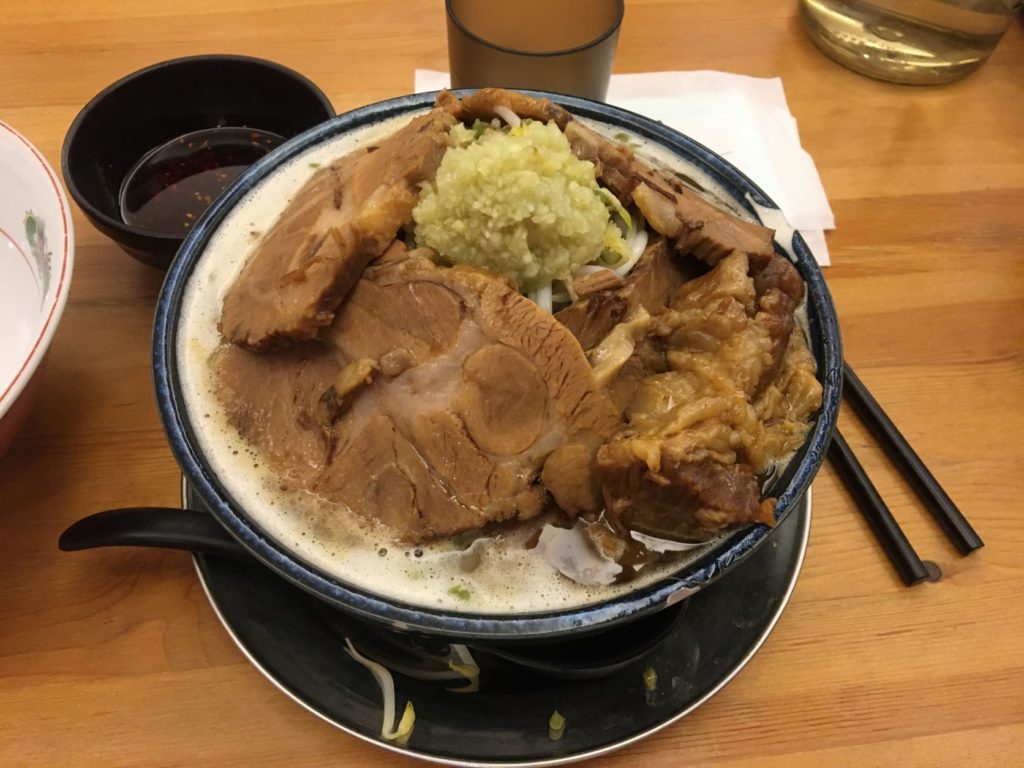
Overall, Jiro-style ramen is the most
narrative (unhealthiest) ramen I’ve ever seen. Its hater and lovers separate clearly. Can you imagine that people need to “speak a magic spell” in order to have a Jiro-style ramen?
Jirolian style ramen comes from Ramen Jiro in Tokyo. The founder, Yamada Takumi-san, developed Jiro known for its big portion for satisfying the huge appetite of college students next to the ramen shop at a cost-effective price. The signatures of Jiro are a big portion of thick noodles and a mountain on the top of ramen made with garlic, boiled bean sprouts/ cabbage and pork backfat. Because the Jiro Ramen is always full of people (public, students and challengers) in long queues, a spell to customise the previous three toppings plus broth density was even born for enhancing the ordering efficiency. Besides, there are other specific rules for dining at Jiro, which makes the fans (as known as Jirorian) become a closed subculture group. As a result, some people called this phenomenon “The Cult of Ramen Jiro”
Back to Jiro-style ramen at Shichimenchou. Although there are two sizes of Jiro-style ramen, customers only can order a regular one in the beginning. Only when they are able to finish the regular one, the large size can be ordered next time. Jiro-style ramen is also the only ramen at the restaurant which people cannot ask for free rice.
Before challenging Shichimenchou’s Jiro-style ramen, I have polished off a Jiro-style ramen at another ramen shop, which portion was bigger than this one. Therefore, I was pretty confident that there would not be any food waste. Similar to its origin, Jiro-style ramen here also can be customised. For making it a bit healthier (like those who ordered a salad at Mcdonald’s ha), I chose extra garlic, thick broth, vegetable and little pork fat. It tasted yummy in the beginning, very porkish. But after a while, the extra garlic and vegetable would play important roles in decreasing the greasy feeling from the fat and thick broth. Meanwhile, for avoiding eating Jiro ramen in a single flavour, I asked the server to give me little spicy oil to change the single taste a little bit. (Thank you!) This indeed helped me finish the Jiro experience faster.
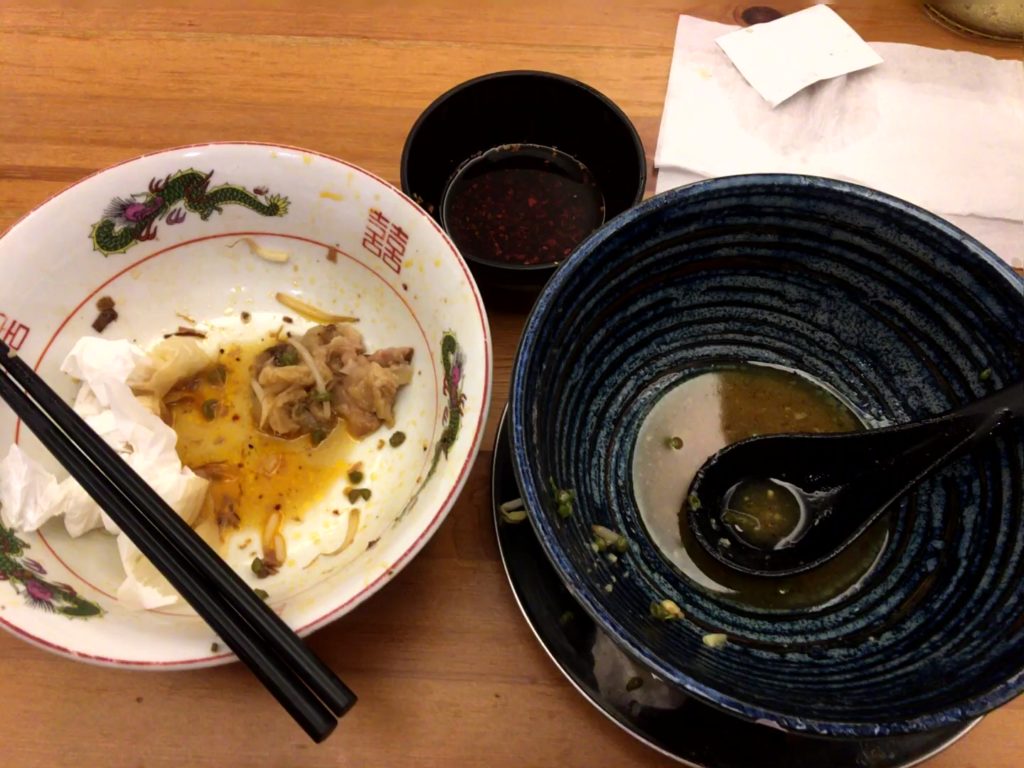
Overall, I regard myself as neither a lover nor a hater towards Jiro-style ramen at Shichimenchou. Undoubtedly, it is a “convenient” meal because people usually won’t be able to eat other things after having Jiro. For me, it is still too greasy and won’t be my first option when visiting Shichimenchou. However, it is still a must when you visit Shichimenchou because Jiro is too unique to be easily found at most Taiwanese ramen shops. Plus, compared with other Jiro-style ramens in Taichung, the one offered by Shichimenchou is the most similar to the original Jiro ramen in Japan. Won’t regret giving it a try!
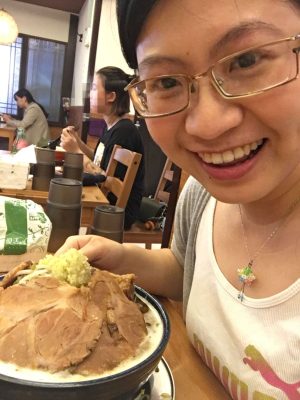
Info
Shichimenchou らーめん
No. 15, Lane 331, Zhongmei St, West District, Taichung City, Taiwan 403
11:30am–2:30pm 5:30–8:30pm
Mon to Sun
About NTD$230-300 per ramen
Facebook page –
https://www.facebook.com/%E3%82%89%E3%83%BC%E3%82%81%E3%82%93%E4%B8%83%E9%9D%A2%E9%B3%A5-427652554063509/